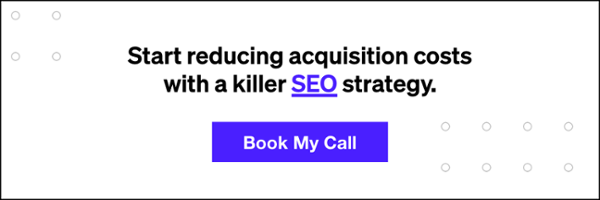How do you know what someone is looking for on the web? Most importantly, how do you get your content and product or service in front of that person? It all comes down to understanding search intent.
When you’re at home with a cold and convinced you are dying while laying there on the couch, you’ll most likely use the word “cold” rather than “illness” when doing a search on the best cold remedies. If you’re the company selling cold medicine this information is important to know as it will help guide your decision to use “cold” rather than “illness” when choosing keywords to shape your commercial messages.
By understanding the intent of these keyword searches and the different kinds of search queries, marketers and bloggers can better accommodate the needs of those people looking for a product or service.
Break It Down: Know The Various Kinds Of Search Queries
Search queries come in a few different types, but basically can be categorised as: navigational, transactional and informational.
Navigational queries are when we look for that one particular website, say the Mongolian restaurant a few minutes away from our house or the Rolling Stones website. The end goal of these searches is to land on the exact page we’re looking for.
What do we use the web for mostly? That’s right, information. This is the big one, as it’s estimated the 80% of all web searches are not about transaction or navigation but to get information. From learning how to mount my tv or learning what the health benefits of quinoa are, there are many different types of informational seaarches.
Transactional queries are when people want to buy something. This type includes researching a product as well as the act of purchasing it. The transactional type of query will include action terms like “buy” and “purchase” (but not always at the beginning during the research phase.) This is the group you’re targeting.
Related: Understanding the Full Environment of the Search Landscape
There’s a way to do this successfully. Simply crowding “buy” and “purchase” into your keywords will not help you stand out in a crowded market place where everyone else is doing the same – but more on that later. The person who searches “how to mount my tv” most likely already has a tv mount and is looking to learn the logistics of how to hang it up.
This makes this keyword an informational search compared. Someone searching for “best tv mounts” is more likely to be in the market to buy a TV mount and is doing their research to figure out which TV mount is best for them.
Once you pick keywords that have the right search intent, it’s important to make your keywords as specific and relevant as possible so that you increase the likelihood of a person finding what they’re looking for. For example, say that the person looking how to mount their TV has a large TV that required special instructions.
If they land on instructions that explain how to hang a small TV, then this result doesn’t answer this person’s search query. That’s why long-tail keywords with specific search intent are so important. If someone searched for “how to mount a 60 inch tv” and it brought up instructions for hanging large TVs, then this web page answered this person’s search query.
Tools To Help You Find Keywords
One is Google’s Keyword Planner which can help you compile a list of keywords expected to perform well and takes into consideration your product and previous Google searches. The service also provides historical data and can generate a list of keyword combinations. Google provides the service to help customers using their AdWords tool and program.
Google also offers Google Trends which allows you to compare two side-by-side keywords to determine which one is more popular and gets plugged into those search boxes most often. By using both you can paint a fairly comprehensive picture as to what will work for your product or target.
If you don’t want to go the Google route there is Keyword Tool that lets you “Discover thousands of keywords hidden by Google Keyword Planner.” The claim being that since Google is running the search engine show with the vast majority of internet searches being done through their page, they could also be tipping the scales in their favour.
Related: Are You Choosing the Right Keywords? A Guide to Search Intent
There’s a free keyword tool from Wordstream that is easy to navigate. Type in the keyword you’re thinking of using, in this case “drink mixer”, then choose the industry (health) and then the country. The program will list keywords as they relate to Google search volume.
In this case “drinking alcohol” came in first with 5,400 search volume while “alcoholic drinks list” made second with with a 1,300 search volume. “What drinks can I make” was 10 times more popular than “drinks with alcohol”.
Now you are going to take all that hard research you did discovering which keywords are popular and trending and decide which ones your customer will most likely type into their search box when exploring mixed drinks.
For example since your drink mixer is organic and contains no sugar your clients are health conscious and athletic, so you might consider using keywords like “organic alcohol” and “cross fit” – both of which score high in keyword searches done by active lifestyle users.
Social Media Search Intent
Also keep in mind that not everyone is searching for items via Google. Many people use social media to find what they are looking for. Hashtags are keywords that work well for searches on platforms like Instagram and Twitter. While this is mostly done for trending stories and breaking news, more and more people are using it to search for products.
Related: Integrating Social Media Strategies with Other Channels
The idea is that Twitter and Instagram (and other social media to some extent) deliver more honest and immediate information than the web search engines. Facebook and YouTube can handle multi-keyword queries and excel at delivering casual reviews and videos. As a marketer the great thing about social media platforms is that you can check to see which topics are trending and employ those to your advantage.
Tools like Buzzsumo searches Twitter, LinkedIn, Facebook and Pinterest and will show you how a keyword fared in Facebook engagements as well as with Twitter, Pinterest and LinkedIn shares.
Directing Traffic
So now we’ve discovered how to identify search intent and how to find the best keywords, let’s explore how we can use these tools.
Through keywords and content you can help direct customers along through this journey to your product or service. When the potential client begins to develop interest you need to have information ready for them. You can do this through content creation and keywords that work through the buyer’s journey – awareness of a need, search for solutions, and purchasing decision.
It’s important to note that the person searching has varying levels of interest during this process, from vaguely interested and just curious at the beginning, to somewhat interested in the middle and then on to very interested as they zero in on making a purchase.
Being visible to your potential customer throughout this process means having content at the ready for every phase. To do this you must have keywords and content aimed at making clients aware of a need, offer them solutions to that need and offer purchasing options. Let’s take a look at some examples.
The Buyer’s Journey
In step 1 of the buyer’s journey a person becomes aware of a product or service and realises they have a need. Your product can become a blip on this person’s radar by keyworded content on your site about either creating a need or making them aware of a need.
In the example of an Organic Drink Mixer company, you could have articles about how the majority of drink mixers use pesticide-treated fruits for their ingredients. Since your potential customer is health conscious but likes the occasional mixed drink, they would see this as a problem that needs to be addressed the next time they mix drinks.
Related: How to Deliver Value at Every Stage of the Customer Journey
During step 2 the prospective client will search for solutions to this need and gather information about products. By making savvy keyword choices you can lead this customer to articles posted on your site. Maybe they use keywords like “healthy mixed drinks” or “organic drink recipes”.
The content could, for example, show how organic fruit is the healthiest choice when making mixed drinks because there is no pesticide residue that becomes concentrated and dangerous when mixed with alcohol. (Not sure if this is the case, but it’s just an example.)
In step 3 the customer narrows their options and decides what it is they will finally purchase. Here you can inform the customer that a solution exists. Organic Drink Mixer is healthy, comes in creative flavors and is simple to prepare. Guide them with keywords to your page that features easy, healthy drink mix recipes using your product.
Step 4 is where the client actually buys the product. Since you opened the client’s eyes to see that Organic Drink Mixer solves the problem of time, cost and preparation necessary to make an organic drink mixers from scratch, make it easy for them to buy your product. Now is the time to use those keywords “buy” and “purchase”.
Related: Why Awareness Is an Important Step in the Buyer’s Journey
By understanding the client’s search intent and what they looked for through the search engines you were able to use keywords to your advantage.
It all started with understanding search intent. Through the customer’s search for using particular keywords you’re able to map the buyer’s journey. By having content that is focused around the most relevant keywords that correlate to the web search that begins this journey, you’ve been visible to your client through the whole process.








